Did you catch the new coronavirus variant Omicron? How can you tell? “The symptoms of Omicron are not significantly different than with Delta,” said Dr. Anthony Fauci, the chief medical advisor to the President and the director of the National Institute of Allergy and Infectious Diseases. “There are some reports that need to be verified, that there is less of a loss of taste and smell and more of an upper respiratory mild symptom, very reminiscent of an upper respiratory infection. But you see that with other variants, including Delta.” So what are signs you have COVID now? Read on for 10 of the most common—and to ensure your health and the health of others, don’t miss these Sure Signs You’ve Already Had COVID.
Many people are reporting cold-like symptoms come with Omicron, particularly among the vaccinated or boosted. This may be the sniffles or a scratchy throat, some mild fatigue, fever, aches. But don’t think “it’s just a bad cold, who cares.” “Even if you have a mild illness, you can transfer it to somebody and that puts their life at risk,” said US Surgeon General Vivek Murthy today. There are other risks, like Long COVID—i.e. lasting symptoms that may never go away. Also: “Even if it proves less severe, we are seeing people are being hospitalized with Omicron. They tend to be unvaccinated. We know the best way to get booster protection against hospitalization or death is to get that booster shot. There are more than 80,000 locations to get one. Go to vaccines.gov to make an appointment.” A booster offers 75% protection. At some clinics, you can walk right in. Do so even if you previously had COVID. “Having protection before” does not necessarily “protect you from Omicron,” said Dr. Murthy. Keep reading for the other key symptoms.
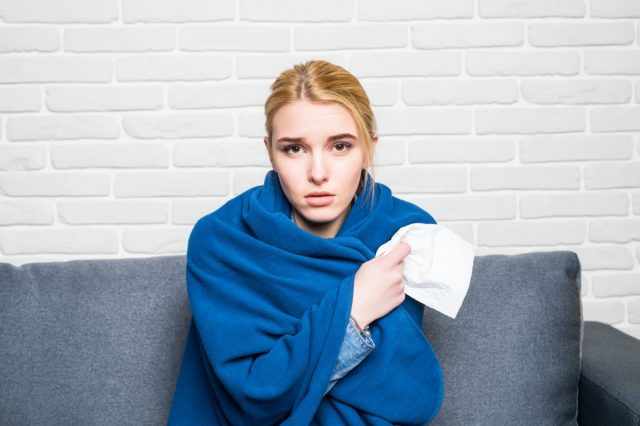
If you get a temperature of more than 100.4 degrees, it very well may be because of COVID. But not everyone gets a fever. “The first thing to say is that if someone has COVID-19 symptoms (Omicron most common: nasal congestion/runny nose, scratchy sore throat, fever, and aches), you have to assume they have it. You may not have a test (urgent cares are still open and do) or they may still be negative,” says Dr. Tatiana Prowell, an Associate Professor of Oncology at Johns Hopkins School of Medicine.
RELATED: The #1 Health Resolution You Must Make in 2022
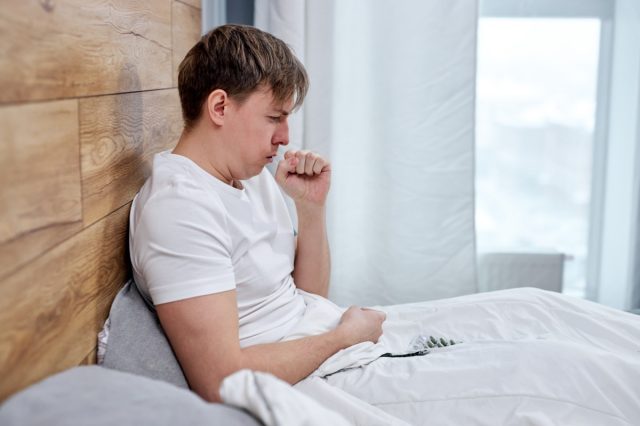
Cough has been a COVID symptom from the start—and the most noticeable, including to others. Stay home if you have one, leaving home only if you need a test or to see your doctor. “Even if it’s not Covid, it’s never a good look — especially in flu season — to show up resembling an extra from Contagion,” wrote Jenni Avins in an opinion piece in the New York Times. “At the risk of being a Grinch, I’d rather not catch your head cold or stomach flu, thank you.”
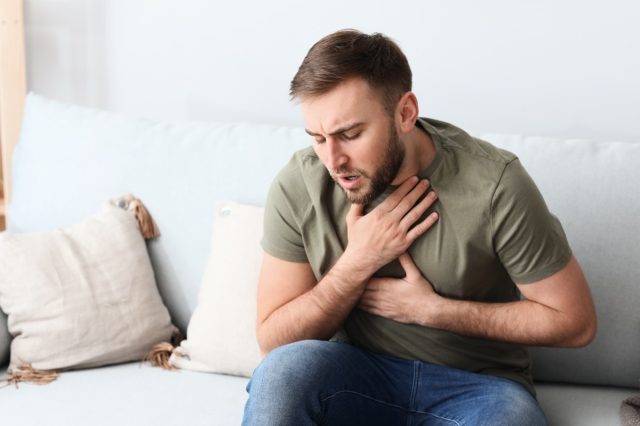
“The coronavirus that causes COVID-19 attacks the lungs and respiratory system, sometimes resulting in significant damage. COVID-19 often leads to pneumonia and even acute respiratory distress syndrome (ARDS), a severe lung injury. Recovering lung function is possible but can require therapy and exercises for months after the infection is treated,” writes Peiting Lien, DPT, PT.
RELATED: The #1 Reason You Look Older and How to Reverse It

NPR reporter Will Stone had what would be classified as a “mild” case but it still sounds amazingly unpleasant. “Fatigue had enveloped me like a weighted blanket…[n]ext, a headache clamped down on the back of my skull. Then my eyeballs started to ache. And soon enough, everything tasted like nothing…It was a miserable five days. My legs and arms ached, my fever crept up to 103 and every few hours of sleep would leave my sheets drenched in sweat.”
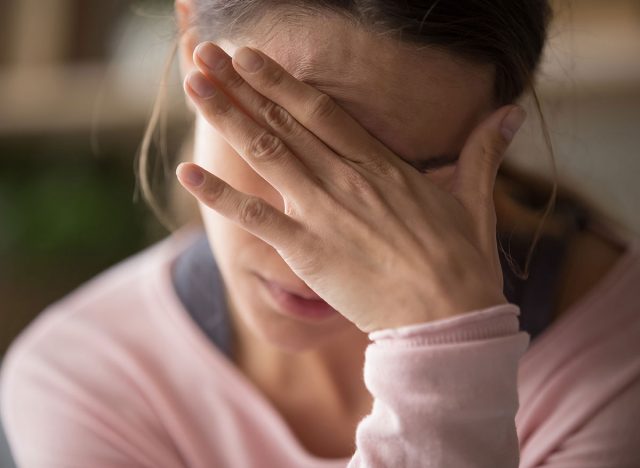
A COVID infection can inflame your vascular system and your brain, either of which may cause crushing headaches and migraines. For some Long COVID patients, these debilitating head pains may never go away for good. Another reason to protect yourself.
RELATED: Places “Swarming” With COVID, Say Experts

“About 58 percent of those surveyed reported experiencing muscle aches in a survey following an outbreak of 111 confirmed or probable Omicron cases among mostly fully vaccinated guests at a Christmas party held in Oslo, Norway on Friday, Nov. 26,” reports the Daily Voice.

In that same Oslo study, “Twenty-three percent reported reduced taste and 12 percent reported 12 percent say they experienced reduced smell,” reports the Daily Voice. This was a hallmark symptom of other COVID variants.
RELATED: I’m a Doctor and Here’s When This Nightmare May End
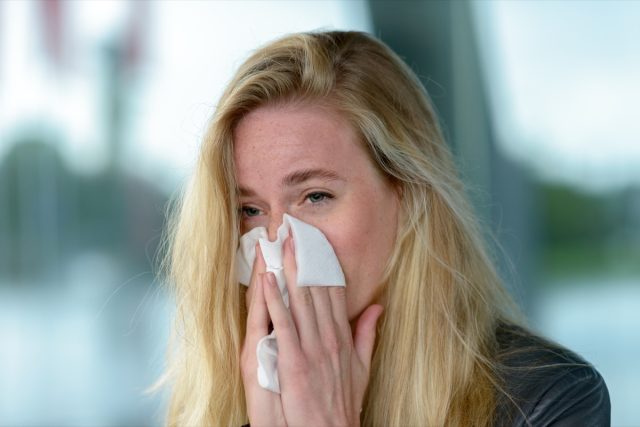
“Data released on 16 December by the Covid Symptoms Study,1 run by the health science company Zoe and King’s College London, show that the top five symptoms reported in the app for omicron infection were runny nose, headache, fatigue (either mild or severe), sneezing, and sore throat. This initial analysis was based on positive cases in London, which was selected because of its higher prevalence of omicron than in other parts of the UK,” reports BMJ.
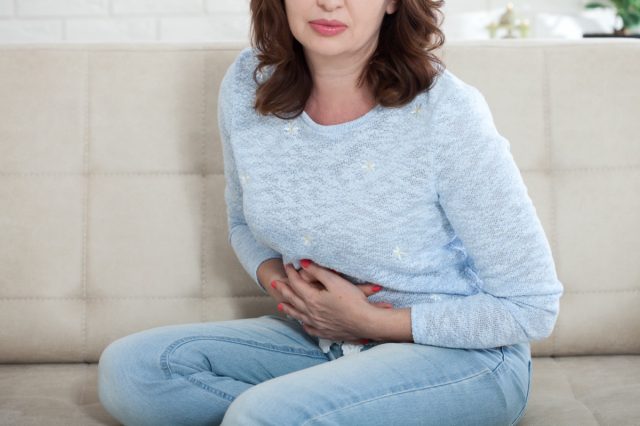
Nausea, vomiting and diarrhea have been COVID symptoms since the initial COVID struck and may still strike you. “COVID-19 can be transmitted through poo and contaminated surfaces or hands. It’s critically important to wash your hands thoroughly and regularly clean bathrooms if you, anyone you live with, or someone you’re caring for has diarrhoea, to prevent the infection spreading,” says the Zoe Symptom Report.
RELATED: I’m a Doctor and Warn Against Going Here Now
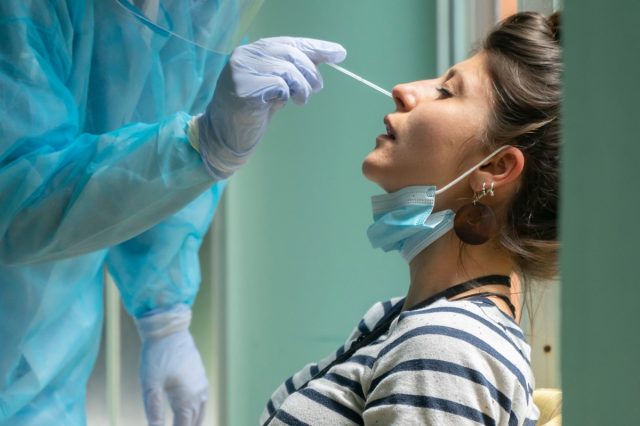
If you think you caught COVID, the CDC says to:
- “Stay home. Most people with COVID-19 have mild illness and can recover at home without medical care. Do not leave your home, except to get medical care. Do not visit public areas.
- Separate yourself from other people. As much as possible, stay in a specific room and away from other people and pets in your home. If possible, you should use a separate bathroom. If you need to be around other people or animals in or outside of the home, wear a mask.
- Get tested. If you have symptoms of COVID-19, get tested. While waiting for test results, you stay away from others, including staying apart from those living in your household.
- If you are sick, wear a mask over your nose and mouth. You should wear a mask over your nose and mouth if you must be around other people or animals, including pets (even at home).” And to prevent an infection in the first place, don’t visit any of these 35 Places You’re Most Likely to Catch COVID.